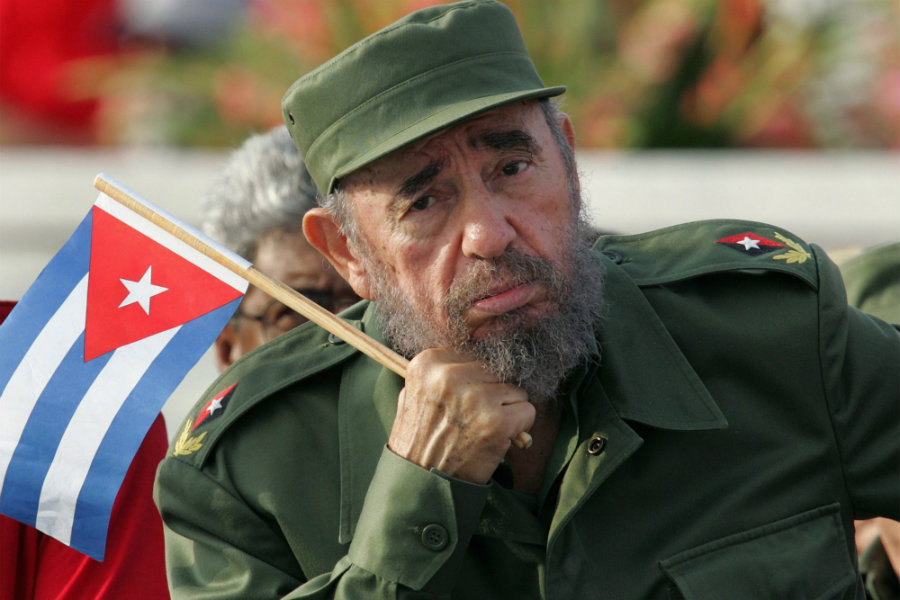Fidel Castro, the leader of the Cuban Revolution and president of Cuba for over 50 years, was announced dead by his brother Raúl Castro.
Castro ceded power to his brother in 2006 after falling ill, and years later he formally stepped down from the presidency.

Fidel Castro was the modern politician with the longest time in power, compared only to Queen Elizabeth II. During his rule, he defied the United States policies and served as a launch base for Russian ballistic missiles, leading to a point where everyone believed that a nuclear disaster was imminent.
Although Castro was strongly backed by some of his firmest allies in the form of Russia during the Cold War, and Venezuela, the consensus is that Fidel Castro was a dictator who oppressed the people of Cuba, mainly through firing squads, persecution, poverty, and human rights abuse.
“While Cuba remains a totalitarian island, it is my hope that today marks a move away from the horrors endured for too long, and toward a future in which the wonderful Cuban people finally live in the freedom they so richly deserve. Though the tragedies, deaths, and pain caused by Fidel Castro cannot be erased, our administration will do all it can to ensure the Cuban people can finally begin their journey toward prosperity and liberty,” stated President-elect Donald Trump.
Finally, Fidel Castro Ruz lays to rest
Castro managed to make adversity against the United States his primary focus of development toward a Stalinist dictatorship, stomping individual freedoms, and always seeking confrontation to delve deeper to a state of “constant warfare,” even if the real source of danger for Cubans were the officials of Castro’s government.
Fidel Castro participated in several insurgency movements throughout the Americas, which allowed him to learn the basics of starting a revolution in arms. Castro was named a candidate for the House of Representatives in 1952, which let him be directly involved in Cuban politics. He met General Fulgencio Batista, a right-wing dictator tied to the United States. Batista seized power that same year and declared himself president, canceling the upcoming elections.
Rapidly, Castro founded a group called “The Movement,” recruiting over one thousand members from the poorest districts in Havana. Castro kept himself distanced from traditional leftist parties to avoid raising suspicions. As months passed, he hoarded weapons to prepare an attack on the Moncada Barracks. As he arrived with his rebels, he was met with machine gun fire, which led to several losses on both sides. Batista called for a martial law and a military lockdown while Castro fled to the mountains to further develop his guerrilla tactics.

When he was prosecuted for the attack, Castro, a law student, embarrassed the army and the prosecutors by clarifying that he had risen against an unconstitutional leader. After being sentenced to 15 years in prison, he delivered his famous speech titled “History Will Absolve Me.”
Being forced to flee from Cuba, Castro met the Argentinian revolutionary Ernesto “Che” Guevara in Mexico, who shared his Marxist views. After touring for support, Castro and his troops entered Cuba aboard the Granma, a rudimentary boat, as Batista’s regime attacked them. Through guerrilla warfare tactics, Castro and his followers attacked small army posts to obtain supplies. The group garnered support from local settlements, boosting the rebel forces to over 200 men.
Pioneering a new way of seizing power by the force
With time, Castro gained strength and support, even from the United States after a report on his cavalcade was published in The New York Times. Due to their inexperience fighting against guerrilla warfare, Batista’s troops were not able to harm Castro’s, who were aided by locals who opposed Batista’s oppressive politics. By December 31, 1958, Castro controlled critical sectors of Cuba, which led the U.S. to instruct General Eugenio Cantillo to arrest Batista, agree to a ceasefire with Castro, and proclaim Carlos Piedra as president. Batista fled the country with hundreds of millions of dollars, after which Castro seized control of the government on New Year’s Eve.
One year later, he was sworn in as Prime Minister. He initially denied any involvement with Marxism, even if his hand-picked officers were radical Marxists. A populist government, Castro’s time in power provided people with essential services, such as education, water, housing, and medical aid. He was a “man of the people,” always determined to maintain dialogue and answer questions. Students, workers, and farmers widely supported the first years of his mandate. Professionals in the middle class opposed his views and migrated to Florida, allowing Castro to have a tighter grip on power and to persecute dissidents on behalf of the party’s ideals, with a free use of torture and assassination for anyone who opposed the revolution.
U.S. presidents, from Eisenhower up to Kennedy, saw Castro as a threat to continental stability, which led to over 600 proposed plans to kill the leader of the Cuban Revolution. Some of the methods include poisoned or exploding cigars and even a booby-trapped sea conch for Castro to pick up and die in an explosion.
Throughout his life, Castro was a pain in the rear of the U.S. and a world-class strategist, influencing dictators and leftists alike. He promised freedom for Cubans but instead met them with torture, hunger, and shooting squads aimed at homosexuals, musicians, and anyone who brought any hint of external influence to the isle of Cuba.
Source: CNN
